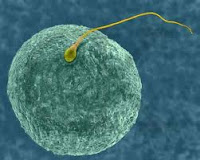photosynthesis: is the process in which plants use water, carbon dioxide, and energy from the sun to make food.
vascular plant: plants that have tubelike cells in their roots, stems, and leaves to carry food and water.
nonvascular plant: plants that don't have tubelike cells in their stems and leaves.
moss: is a small, nonvascular plant thtat has both stems and leaves but no roots.
sexual reproduction: is the forming of a new organism by the union of two reproductive cells.
egg: a female reproductive cell.
sperm: a male reproductive cell.
fertilization: the joining of the egg and sperm.
xylem: cells carry water and dissolved minerals from the roots to the leaves.
phloem: cells carry food that is made in the leaves to all parts of the plant.

fern: is a vascular plant that reproduces with spores.
seed: is the part of a plant that contains a new, young plant and stored food.
embryo: is an organism in its earliest stages of growth.
conifer: is a plant that produces seed in cones.
pollen: are the tiny grains of seed plants in which sperm develop.
flowering plant: is a vascular plant that produces seeds inside a flower.
flower: is the reproductive part of the plant.

















No hay comentarios:
Publicar un comentario